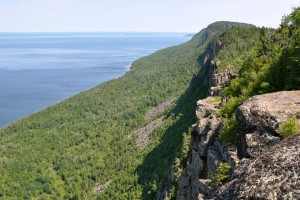ON ANY GIVEN DAY, in Sleeping Giant Provincial Park, you can identify more than 100 species of birds.
“Hear that?” Parks Canada’s Greg Stroud asks me. Stopped mid-stride, he sang back to an ovenbird that was perched in a tree overhead, “teacha, teacha, teacha.”

